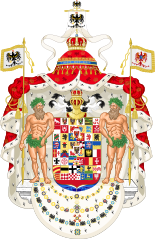Chapter 137. The Great Population Transfers (Part I)
- Location
- Romania
Chapter 137. The Great Population Transfers (Part I)
For context, you may review Chapter 131. Treaty of Reykjavik. Alternatively, you may just browse the Ceasefire Treaty which I inserted into the spoiler below.
Disclaimer: I do NOT condone involuntary population transfers / ethnic cleansing.
Involuntary population transfers may be good for the state but they are almost never good for the people involved. Those people lose their immovable property and often most of their movable property as well. They lose their homes, their neighbours, their friends, their jobs, their livelihoods and the graves of their families. Their uprooting is often sudden and violent and they may suffer all kind of hardships before, during and after their relocation. Some of them may even lose their lives to random or organized violence, malnutrition, disease, neglect or accidents. The survivors will almost always receive inadequate compensation for their losses, may be treated with suspicion by the host population, may find it difficult to integrate into their new society, find employment, schooling for their children, etc.
Yes, I know all that from my father's family who were deported in 1940 from Southern Dobruja after it was ceded to Bulgaria.
Yes, the overall picture often seems rosy. The conflict between the different ethnicities is extinguished and internal and external peace is preserved and strengthened. But the individual suffering is often forgotten or brushed aside for the greater good, for the sake of the Nation or of the State. Human rights be damned!
Today, involuntary population transfers are considered ethnic cleansing and are thus illegal. Less than one century ago, they were praised and their initiators were awarded the Nobel Prize for Peace (Fridtjof Nansen).
Note: Some of the population figures provided in this chapter may be wrong. Please correct me if you have access to better data than I did. Thank you.
Preamble
The Treaty of Reykjavik suspended the state of war in Eastern Europe (ceasefire) for a duration of five years (until 25 September 1953), renewable with the accord of both sides (if not superseded by a formal peace treaty).
Some portions of the treaty, such as the official recognition of the facts on the ground in Europe and the change in status of the eastern lands (from SSRs to Soviet occupied territory), took effect immediately upon the signing of the document, others shortly afterwards.
The release of the millions of prisoners of war started immediately after the end of the Reykjavik Conference but it took almost five months to complete.
The population transfers, the greatest in history, proved to be extremely complex, logistically difficult, lengthy and contentious. Started in the summer of 1949, the population transfers called by the treaty were not completed until the autumn of 1952 (with interruptions during the winters for humanitarian reasons).
The Exchange of the Prisoners of War
October 1948 - February 1949
Between the start of Operation Barbarossa (22 June 1941) and the activation of the Berlin Dome (17 January 1945), the Soviet Union took almost one million German prisoners of war. About one third of those died in captivity. The prisoners of war from the other Axis powers had been already released by that time.
Between June 1941 and September 1948, the German Reich and its Eastern European allies (Hungary and Slovakia) and co-belligerents (the Baltic States and Poland after 1945) took 7.9 million Soviet prisoners of war. Almost 3.3 million of those died in captivity and 1.7 million (mainly ethnic minorities and anti-communists) were released, some of them even fighting against the Soviet Union (ex. Andrey Vlasov's Russian Liberation Army). Most of those freed emigrated to North America or Australasia and a few settled in Europe (mostly in Poland, Slovakia and Bohemia-Moravia).
Therefore, in October 1948, the German Reich held 2.9 million Soviet prisoners of war and the Soviet Union 645,000 German prisoners of war. The Soviet prisoners taken by Germany's eastern allies and co-belligerents (most of them by Poland in 1945) had been previously transferred to Germany and are included in the above figure.
The prisoners of war were transported to both sides of the Dome Limit using special purpose trains and transferred to the other side through temporary openings in the Dome.
The liberated German soldiers received immediate medical attention and copious meals. Most of them were quickly released to their homes and slow reintegration into society. About 80,000 necessitated long periods of hospitalization. Most of those received free nanobot packages which significantly sped up their recovery. Sadly, only the physical ailments could be thus easily cured as the mental issues which plagued many former prisoners were more difficult to address.
Generalfeldmarschall Friedrich Paulus was immediately arrested and tried for high treason because of his war-time collaboration with the enemy. The trial caught the attention of the media and ended in a controversial acquittal. Although not convicted, Paulus was nonetheless disgraced and dishonourably discharged from the Wehrmacht. He died eight years later of a degenerative neurological disorder.
All liberated Soviet soldiers were detained and interviewed by the NKVD. Those found ideologically tainted by Fascism (about 410,000) were sent to the Gulag where at least one quarter of them perished.
The Controversy
January - February 1949
An ugly controversy arose regarding the former Soviet prisoners who had been released from captivity during the previous years and had settled all over the World, especially in the United States, Canada, Australia, the United Kindgom, Poland and Germany itself.
When Stalin asked Germany and its allies to forcefully repatriate the unwilling former soldiers, the European allies refused, stating that those men (i) had deserted from the Red Army, (ii) had renounced their Soviet citizenship, (iii) did not want to live under a Communist dictatorship and (iv) would be imprisoned, tortured or killed if returned to the Soviet Union.
Stalin countered by saying that many of the millions of people who, according to the Reykjavik Treaty, would be sent to Europe did not want to emigrate either and, as the situation of the two groups was similar, he would refuse to force them out of the Soviet Union to live in a Capitalist society against their will.
The Escalation
March 1949
The situation reached an impasse as neither side was willing to concede ground. The German Reich accused the Soviet Union of violating the ceasefire and threatened to resume the war.
The Soviets detonated their first nuclear device, a 21 kilotonne plutonium implosion bomb, in the Pripet Marshes, a mere 13 kilometres from the Dome Limit (which marked the de facto international border with Poland in that region). The explosion was clearly visible from nearby Polish territory and created panic with many residents fleeing the areas close to the Dome Limit.
We will obliterate with nuclear fire any armies which would dare invade our Motherland.
A couple of days later, the Wehrmacht launched a ballistic missile from East Prussia on a trajectory towards Moscow. It did not arrive there as it hit the Dome at an altitude of 111 kilometres, producing a nuclear explosion with an estimated yield of 650 kilotonnes.
Next time there will be an opening in the Dome and the missile will reach its destination.
Thus, in 1949, the number of nuclear powers increased from one to three: the United States of America, the Soviet Union and the German Reich (or Lithuania as a very transparent cover-up). The United Kingdom (with Australian and Canadian help) trailed behind and France had completely aborted its nuclear programme. China and India had yet to start their nuclear programmes.
With nuclear war looming over Europe, the World Forum intervened and brokered a compromise. For its role in preserving a delicate peace in an unstable World, the World Forum was awarded the Nobel Peace Prize in 1957.
The Compromise
March - April 1949
In fact, the only issue was that of trust or, better said, the lack thereof. Neither part trusted the other when it said that those groups of people (former Red Army soldiers in Europe / various European ethnicities in the Soviet Union) did not want to relocate (return home in the Soviet Union / emigrate to the European countries matching their ethnicity).
The Germans claimed that the Soviet Union was in violation of the treaty which mandated involuntary population movements but the German Reich was not because those former soldiers were no longer prisoners of war but free people given political asylum and not mentioned in the treaty in any way.
Correctly but hypocritically, the Soviets claimed that involuntary population transfers were a crime and they could not force Soviet citizens to leave their country. Obviously, the Germans mentioned the numerous internal deportations of entire ethnic groups performed by the Soviet regime which the Soviets blatantly denied. Moreover, the Germans claimed that those people actually wanted to leave the Soviet Union but were trapped by closed borders in a totalitarian inferno. Naturally, the Soviets denied that as well.
The intervention of the World Forum was simple and obvious. It offered to send observers from neutral countries to find out whether those people really wanted to relocate or not.
Thus, the formerly involuntary population transfers would become a voluntary migration and both parts would have to trust the avowedly neutral World Forum instead of each other.
Germany eagerly approved the initiative but the Soviet Union, while in principle agreeing as well, did not grant the World Forum inspectors free access to its territory. After more bellicose posturing from both sides, a mutually acceptable but very convoluted solution was devised.
Because the Soviet Union did not want to grant the inspectors access to its territory, the populations mentioned in the Reykjavik Treaty would be involuntary transferred to Special Areas created along the Soviet borders under the temporary direct authority of the World Forum. There, free from fear of Soviet oppression, the refugees would sign a form in front of two World Forum witnesses, freely choosing whether to continue their journey and leave the Soviet Union or return to their homes.
Faced with pressure from the Western Powers and under the threat of atomic bombing from Germany, the Soviet Union finally acquiesced to the World Forum's compromise plan.
Population Transfers Estimates
April - May 1949
The populations scheduled to be relocated by the Reykjavik Treaty are summarized below.
The deported category includes persons removed from their homelands by the Soviet authorities, whether imprisoned in a gulag or normal prison, deported (obligatory residence) or simply relocated (theoretically free to leave). The indigenous category includes historical ethnic minorities (from before the Soviet occupation). The colonized category includes the Soviet citizens relocated by the Soviet regime to the occupied (annexed) territories.
The deported and the colonized persons would be returned home no questions asked. The relocation of the indigenous minorities would be voluntary (according to the World Forum's compromise plan).
"Foreign ethnicities" from the Soviet Union to other countries:
2. See also below: The Germans from the Soviet controlled territories.
"Soviet ethnicities" (Russians, Ukrainians, Byelorussians, etc) from other countries to the Soviet Union:
In total, the Soviet Union could lose more than six million people, a massive loss which would be only partially offset by the certain return of less than three million Soviet colonizers and the possible immigration of up to two million people (indigenous "Soviet minorities", Communists, etc).
Population Transfers in the Balkans
4. Romania and Bulgaria had already performed a partial population exchange in 1940 (the Romanians from Southern Dobruja with the Bulgarians from Northern Dobruja).
5. The Aromanians from Albania were considered to be in imminent danger of assimilation thus the 1:10 ratio was not respected in that case.
6. Most of Serbian Macedonia and the Bulgarian parts of Serbia Proper are part of Bulgaria.
7. All population exchanges with Greece were voluntary mainly because Greece considered most or all members of its ethnic minorities to be Greeks. Southern Epirus is part of Greece.
8. Although Croatia would have preferred to get rid of part of its large Serb minority, sending them to live under Soviet occupation against their will was out of the question.
The Germans from the Soviet Controlled Territories
Germany could thus gain more than two million Volksdeutsche from the Soviet controlled areas in Eastern Europe.
During the previous years, almost one million Volksdeutsche had immigrated to Germany (some of them involuntarily):
The World Forum inspectors were deployed to their posts in the ECN countries, in selected areas of the Eastern European countries under Soviet occupation and in the Special Areas organized in selected parts of the western Soviet borders. With everything neatly in place, the actual population transfers began in earnest in June 1949 (one month after Adolphine's wedding).
The second part of this chapter will present the results of the population transfers and some of their consequences.
Just a reminder: Some of the population figures provided in this chapter may be wrong. Please correct me if you have access to better data than I did. Thank you.
For context, you may review Chapter 131. Treaty of Reykjavik. Alternatively, you may just browse the Ceasefire Treaty which I inserted into the spoiler below.
Note: All provisions regarding population transfers are formatted with italics.
The Soviet Union recognized:
- the European Community of Nations under the leadership of the German Reich;
- all treaties signed in Europe since 17 January 1945;
- the borders of Germany and of the other European countries;
- the Independence of Estonia, Latvia, Lithuania, Slovakia, Hungary, Romania, Bulgaria, Croatia;
- the dissolution / annexation of Belgium, Flanders, Wallonia, Luxembourg, Liechtenstein, Andorra, Switzerland, Romandy, Outer France, Czechoslovakia, Czechia, Slovenia;
- the internal political structure of the European countries, etc.
The borders of Finland remained unchanged (the post Winter War borders, as the Petsamo Province had been returned to Finland in November 1945).
The military neutrality of Finland was recognized. The Porkkala Lease was dissolved and the Soviet Porkkala Naval Base was closed. The Åland Islands remained demilitarized.
Finland was allowed to join the ECN economical and political structures but not its military alliance.
All ethnic Finns from the Soviet controlled territory would be sent to Finland.
The military neutrality of Finland was recognized. The Porkkala Lease was dissolved and the Soviet Porkkala Naval Base was closed. The Åland Islands remained demilitarized.
Finland was allowed to join the ECN economical and political structures but not its military alliance.
All ethnic Finns from the Soviet controlled territory would be sent to Finland.
The borders of the Karelian SSR were reverted to those of 1940, thus reincorporating the Karelian Isthmus and North-Eastern Salla into its territory. Karelia remained de jure part of the Soviet Union.
All ethnic Karelians (including Ingrians, Veps, Votes, etc) from the rest of the Soviet controlled territory would be sent to Karelia. All foreign people settled by the Soviet Union in Karelia after 1940 would be sent back home. No more deportations from Karelia or colonization of foreign people in Karelia were allowed.
Obviously, the large Russian population who had lived in Karelia for generations was not going to be removed. Former Finnish Karelia (and Salla) would remain almost empty, except for the Soviet military forces stationed there. Viipuri (Vyborg) was expected to become a ghost city. However, Karelians and Russians from the rest of Karelia were expected to start moving to those empty areas.
All ethnic Karelians (including Ingrians, Veps, Votes, etc) from the rest of the Soviet controlled territory would be sent to Karelia. All foreign people settled by the Soviet Union in Karelia after 1940 would be sent back home. No more deportations from Karelia or colonization of foreign people in Karelia were allowed.
Obviously, the large Russian population who had lived in Karelia for generations was not going to be removed. Former Finnish Karelia (and Salla) would remain almost empty, except for the Soviet military forces stationed there. Viipuri (Vyborg) was expected to become a ghost city. However, Karelians and Russians from the rest of Karelia were expected to start moving to those empty areas.
The Independence of Estonia and the Estonian Government in Kuressaare were recognized. The Estonian SSR was dissolved.
From the two areas annexed to the Russian SFSR in 1944/1945, the southern one¹ was returned to Estonia while the northern one² remained part of the Russian SFSR.
The West Estonian Archipelago was under the control of the Estonian Government. Mainland Estonia remained under Soviet occupation and administration while de jure part of Estonia. The western coast of Estonia, facing the West Estonian Archipelago and the Gulf of Riga, was demilitarized.
All ethnic Estonians (including Võros, Setos, Livonians, etc) from the rest of the Soviet controlled territory would be sent to Soviet controlled Estonia. All foreign people settled by the Soviet Union in Estonia after 1940 would be sent back home. No more deportations from Estonia or colonization of foreign people in Estonia were allowed. A significant number of Russians would remain in Estonia.
1. Petseri County / Pechory District -- strategically less important.
2. Jaanilinn Area / Ivangorod District -- the Soviet Union insisted that Russia keep that territory in order to have the border farther away from Leningrad and on a more defensible position on the Narva River.
From the two areas annexed to the Russian SFSR in 1944/1945, the southern one¹ was returned to Estonia while the northern one² remained part of the Russian SFSR.
The West Estonian Archipelago was under the control of the Estonian Government. Mainland Estonia remained under Soviet occupation and administration while de jure part of Estonia. The western coast of Estonia, facing the West Estonian Archipelago and the Gulf of Riga, was demilitarized.
All ethnic Estonians (including Võros, Setos, Livonians, etc) from the rest of the Soviet controlled territory would be sent to Soviet controlled Estonia. All foreign people settled by the Soviet Union in Estonia after 1940 would be sent back home. No more deportations from Estonia or colonization of foreign people in Estonia were allowed. A significant number of Russians would remain in Estonia.
1. Petseri County / Pechory District -- strategically less important.
2. Jaanilinn Area / Ivangorod District -- the Soviet Union insisted that Russia keep that territory in order to have the border farther away from Leningrad and on a more defensible position on the Narva River.
The Independence of Latvia and the Latvian Government in Liepāja were recognized. The Latvian SSR was dissolved.
The area annexed to the Russian SFSR in 1944 was returned to Latvia.³
Inner Latvia and the Outer Courland Peninsula were under the control of the Latvian Government. The rest of Latvia remained under Soviet occupation and administration while de jure part of Latvia. The Soviet portion of the Latvian coast and the Soviet side of the demarcation line in Outer Latvia were demilitarized.
All ethnic Latvians from the rest of the Soviet controlled territory would be sent to Soviet controlled Latvia. All foreign people settled by the Soviet Union in Latvia after 1940 would be sent back home.No more deportations from Latvia or colonization of foreign people in Latvia were allowed. A significant number of Russians would remain in Latvia.
3. Abrene County / Pytalovo District -- strategically unimportant.
The area annexed to the Russian SFSR in 1944 was returned to Latvia.³
Inner Latvia and the Outer Courland Peninsula were under the control of the Latvian Government. The rest of Latvia remained under Soviet occupation and administration while de jure part of Latvia. The Soviet portion of the Latvian coast and the Soviet side of the demarcation line in Outer Latvia were demilitarized.
All ethnic Latvians from the rest of the Soviet controlled territory would be sent to Soviet controlled Latvia. All foreign people settled by the Soviet Union in Latvia after 1940 would be sent back home.No more deportations from Latvia or colonization of foreign people in Latvia were allowed. A significant number of Russians would remain in Latvia.
3. Abrene County / Pytalovo District -- strategically unimportant.
The Independence of Lithuania and the Lithuanian Government in Kaunas were recognized. The Lithuanian SSR was dissolved.
The borders of Lithuania remained unchanged.
Inner Lithuania was under the control of the Lithuanian Government. Outer Lithuania remained under Soviet occupation and administration while de jure part of Lithuania.
All ethnic Lithuanians from the rest of the Soviet controlled territory would be sent to Soviet controlled Lithuania. All foreign people settled by the Soviet Union in Lithuania after 1940 would be sent back home. No more deportations from Lithuania or colonization of foreign people in Lithuania were allowed.
The borders of Lithuania remained unchanged.
Inner Lithuania was under the control of the Lithuanian Government. Outer Lithuania remained under Soviet occupation and administration while de jure part of Lithuania.
All ethnic Lithuanians from the rest of the Soviet controlled territory would be sent to Soviet controlled Lithuania. All foreign people settled by the Soviet Union in Lithuania after 1940 would be sent back home. No more deportations from Lithuania or colonization of foreign people in Lithuania were allowed.
The Soviet-Polish border was NOT settled. The Polish Oblast of the Ukrainian SSR (situated inside the enlarged Dome and already annexed to Poland) was dissolved.
All ethnic Poles from the Soviet controlled territory⁴ would be sent to (Inner) Poland. Large numbers of Ukrainians and Byelorussians would remain in Poland.
4. Byelorussia, Lithuania, Ukraine, Latvia, Russia, Central Asia, etc.
All ethnic Poles from the Soviet controlled territory⁴ would be sent to (Inner) Poland. Large numbers of Ukrainians and Byelorussians would remain in Poland.
4. Byelorussia, Lithuania, Ukraine, Latvia, Russia, Central Asia, etc.
The dissolution of Czechoslovakia was recognized. The Independence of Slovakia was recognized. The Slovak ASSR was dissolved.
Inner Carpathian Ukraine remained under Slovak administration.
All ethnic Slovaks from the Soviet controlled territory would be sent to Slovakia. All foreign people settled by the Soviet Union in Outer Slovakia after 1945 would be sent back home.
Inner Carpathian Ukraine remained under Slovak administration.
All ethnic Slovaks from the Soviet controlled territory would be sent to Slovakia. All foreign people settled by the Soviet Union in Outer Slovakia after 1945 would be sent back home.
The Independence of Hungary and the Hungarian Government in Budapest were recognized. The Hungarian SSR was dissolved.
The borders of Hungary remained unchanged.
Inner Hungary and Outer Transdanubia were under the control of the Hungarian Government. The rest of Hungary remained under Soviet occupation and administration while de jure part of Hungary. The Soviet side of the demarcation line in Outer Hungary was demilitarized.
All ethnic Hungarians (including Szeklers, etc) from the rest of the Soviet controlled territory⁵ would be sent to Soviet controlled Hungary. All foreign people settled by the Soviet Union in Outer Hungary after 1945 would be sent back home. No more deportations from Hungary or colonization of foreign people in Hungary were allowed.
5. Most Hungarians from Romanian Transylvania, Banat, Crișana, Maramureș, Ukrainian Felvidék and Serbian Bačka were excluded. They were in no direct danger of assimilation and there was no room for all them in Hungary.
The borders of Hungary remained unchanged.
Inner Hungary and Outer Transdanubia were under the control of the Hungarian Government. The rest of Hungary remained under Soviet occupation and administration while de jure part of Hungary. The Soviet side of the demarcation line in Outer Hungary was demilitarized.
All ethnic Hungarians (including Szeklers, etc) from the rest of the Soviet controlled territory⁵ would be sent to Soviet controlled Hungary. All foreign people settled by the Soviet Union in Outer Hungary after 1945 would be sent back home. No more deportations from Hungary or colonization of foreign people in Hungary were allowed.
5. Most Hungarians from Romanian Transylvania, Banat, Crișana, Maramureș, Ukrainian Felvidék and Serbian Bačka were excluded. They were in no direct danger of assimilation and there was no room for all them in Hungary.
The Independence of Romania and the Romanian Government in Exile were recognized. The Romanian SSR was dissolved.
From the two areas annexed to the Ukrainian SSR in 1940/1944, the southern one⁶ was returned to Romania while the northern one⁷ remained part of the Ukrainian SSR. Western Transnistria remained part of Romania. Southern Dobruja remained part of Bulgaria.
Romania remained under Soviet occupation and administration while de jure independent.
All ethnic Romanians (including Moldavians, Vlachs, etc) from the rest of the Soviet controlled territory⁸ would be sent to Soviet controlled Romania. All foreign people settled by the Soviet Union in Romania after 1940 would be sent back home. No more deportations from Romania or colonization of foreign people in Romania were allowed. Large numbers of Hungarians (including the Szeklers), Ukrainians and Russians would remain in Romania.
6. Southern Bessarabia / the Budjak -- Germany insisted to keep the mouths of the Danube in Romania as much as Russia wanted to keep Ivangorod. Moreover, the area had a mixed population with a rather low percentage of Ukrainians.
7. Northern Bukovina and Northern Bessarabia (already reduced in area since 1945 with Herța and other areas with Romanian majority or plurality rejoined to Romania) -- strategically less important and with more ethnic Ukrainians.
8. Ukraine, Russia, Central Asia, Hungary, Serbia, Bulgaria, Albania, etc.
From the two areas annexed to the Ukrainian SSR in 1940/1944, the southern one⁶ was returned to Romania while the northern one⁷ remained part of the Ukrainian SSR. Western Transnistria remained part of Romania. Southern Dobruja remained part of Bulgaria.
Romania remained under Soviet occupation and administration while de jure independent.
All ethnic Romanians (including Moldavians, Vlachs, etc) from the rest of the Soviet controlled territory⁸ would be sent to Soviet controlled Romania. All foreign people settled by the Soviet Union in Romania after 1940 would be sent back home. No more deportations from Romania or colonization of foreign people in Romania were allowed. Large numbers of Hungarians (including the Szeklers), Ukrainians and Russians would remain in Romania.
6. Southern Bessarabia / the Budjak -- Germany insisted to keep the mouths of the Danube in Romania as much as Russia wanted to keep Ivangorod. Moreover, the area had a mixed population with a rather low percentage of Ukrainians.
7. Northern Bukovina and Northern Bessarabia (already reduced in area since 1945 with Herța and other areas with Romanian majority or plurality rejoined to Romania) -- strategically less important and with more ethnic Ukrainians.
8. Ukraine, Russia, Central Asia, Hungary, Serbia, Bulgaria, Albania, etc.
The Independence of Bulgaria and the Bulgarian Government in Exile were recognized. The Bulgarian SSR was dissolved.
Southern Dobruja, Macedonia and North-Eastern Thrace remained part of Bulgaria.
Bulgaria remained under Soviet occupation and administration while de jure independent.
All ethnic Bulgarians (including Macedonians, etc) from the rest of the Soviet controlled territory⁹ would be sent to Soviet controlled Bulgaria. All foreign people settled by the Soviet Union in Bulgaria after 1945 would be sent back home. No more deportations from Bulgaria or colonization of foreign people in Bulgaria were allowed. A small number of Turks remained in Bulgaria after their deportations from the previous years.
9. Serbia (Macedonia), Albania (Macedonia), Romania (Banat, Bessarabia), Ukraine, etc.
Southern Dobruja, Macedonia and North-Eastern Thrace remained part of Bulgaria.
Bulgaria remained under Soviet occupation and administration while de jure independent.
All ethnic Bulgarians (including Macedonians, etc) from the rest of the Soviet controlled territory⁹ would be sent to Soviet controlled Bulgaria. All foreign people settled by the Soviet Union in Bulgaria after 1945 would be sent back home. No more deportations from Bulgaria or colonization of foreign people in Bulgaria were allowed. A small number of Turks remained in Bulgaria after their deportations from the previous years.
9. Serbia (Macedonia), Albania (Macedonia), Romania (Banat, Bessarabia), Ukraine, etc.
The borders of Greece remained unchanged.
The military neutrality of Greece was recognized. The Soviet Union removed its military from Eastern Thrace and the Greek Straits Area. The freedom of navigation in the Straits and the Aegean was recognized.
All ethnic Greeks from the Soviet controlled territory¹⁰ would be sent to Greece. Small numbers of Turks and Albanians remained in Greece after their deportations from the previous years.
10. Romania (Dobruja), Bulgaria, Albania, Ukraine (South), Russia (Crimea), Turkey (Black Sea Coast), Georgia, etc.
The military neutrality of Greece was recognized. The Soviet Union removed its military from Eastern Thrace and the Greek Straits Area. The freedom of navigation in the Straits and the Aegean was recognized.
All ethnic Greeks from the Soviet controlled territory¹⁰ would be sent to Greece. Small numbers of Turks and Albanians remained in Greece after their deportations from the previous years.
10. Romania (Dobruja), Bulgaria, Albania, Ukraine (South), Russia (Crimea), Turkey (Black Sea Coast), Georgia, etc.
Yugoslavia was dissolved. The annexation of Slovenia to Germany was recognized. The Independence of Croatia, Serbia and Albania were recognized. All the Yugoslav Republics and Provinces were dissolved.
The Independence of Croatia and the Croatian Government in Zagreb were recognized.
Croatia included Inner Croatia, Krk, Zara, the former Yugoslav Republics of Croatia and Bosnia-Herzegovina and parts of the Croat Autonomous Region of Italy. Eastern Syrmia and the Kotor Bay area remained part of Serbia.
All Croat territory was placed under the control of the Croat Government. Croatia had to establish Serbian and Muslim Autonomous Regions on its territory.
All ethnic Croats (defined as speakers of Serbo-Croatian of Catholic or Muslim faith) from the Soviet controlled territory¹¹ would be sent to Croatia. All foreign people settled by Yugoslavia in Croatia after 1944 would be sent back home. Large numbers of Serbs and Muslims and smaller numbers of Hungarians and Italians would remain in Croatia.
11. Serbia, Hungary, Romania, etc.
Croatia included Inner Croatia, Krk, Zara, the former Yugoslav Republics of Croatia and Bosnia-Herzegovina and parts of the Croat Autonomous Region of Italy. Eastern Syrmia and the Kotor Bay area remained part of Serbia.
All Croat territory was placed under the control of the Croat Government. Croatia had to establish Serbian and Muslim Autonomous Regions on its territory.
All ethnic Croats (defined as speakers of Serbo-Croatian of Catholic or Muslim faith) from the Soviet controlled territory¹¹ would be sent to Croatia. All foreign people settled by Yugoslavia in Croatia after 1944 would be sent back home. Large numbers of Serbs and Muslims and smaller numbers of Hungarians and Italians would remain in Croatia.
11. Serbia, Hungary, Romania, etc.
The Independence of Serbia was recognized.
Serbia included the former Yugoslav Republics of Serbia and Montenegro and portions of the former Yugoslav Republic of Albania (Kosovo and parts of Macedonia).
Serbia was placed under Soviet occupation and administration while de jure independent. The Soviet side of the border with Croatia and the Montenegrin coast were demilitarized.
All ethnic Serbs (including Montenegrins, etc, defined as speakers of Serbo-Croatian of Orthodox faith) from the rest of the Soviet controlled territory¹² would be sent to Serbia. All foreign people settled by Yugoslavia in Serbia after 1945 would be sent back home. No deportations from Serbia or colonization of foreign people in Serbia were allowed. A large number of Albanians and a smaller number of Hungarians would remain in Serbia.
12. Albania, Bulgaria, Romania, Hungary, Ukraine, etc.
Serbia included the former Yugoslav Republics of Serbia and Montenegro and portions of the former Yugoslav Republic of Albania (Kosovo and parts of Macedonia).
Serbia was placed under Soviet occupation and administration while de jure independent. The Soviet side of the border with Croatia and the Montenegrin coast were demilitarized.
All ethnic Serbs (including Montenegrins, etc, defined as speakers of Serbo-Croatian of Orthodox faith) from the rest of the Soviet controlled territory¹² would be sent to Serbia. All foreign people settled by Yugoslavia in Serbia after 1945 would be sent back home. No deportations from Serbia or colonization of foreign people in Serbia were allowed. A large number of Albanians and a smaller number of Hungarians would remain in Serbia.
12. Albania, Bulgaria, Romania, Hungary, Ukraine, etc.
The Independence of Albania was recognized.
Albania included parts of the former Yugoslav Republic of Albania. Kosovo and parts of Macedonia were transferred to Serbia. Northern Epirus remained part of Greece.
Albania was placed under Soviet occupation and administration while de jure independent. The Albanian coast and a portion of the border with Greece near Vlorë were demilitarized.
All ethnic Albanians from the rest of the Soviet controlled territory¹³ would be sent to Albania. All foreign people settled by Yugoslavia in Albania after 1946 would be sent back home. No deportations from Albania or colonization of foreign people in Albania were allowed.
13. Most Albanians from Serbia were excluded. They were in no direct danger of assimilation and there was no room for all of them in Albania.
Albania included parts of the former Yugoslav Republic of Albania. Kosovo and parts of Macedonia were transferred to Serbia. Northern Epirus remained part of Greece.
Albania was placed under Soviet occupation and administration while de jure independent. The Albanian coast and a portion of the border with Greece near Vlorë were demilitarized.
All ethnic Albanians from the rest of the Soviet controlled territory¹³ would be sent to Albania. All foreign people settled by Yugoslavia in Albania after 1946 would be sent back home. No deportations from Albania or colonization of foreign people in Albania were allowed.
13. Most Albanians from Serbia were excluded. They were in no direct danger of assimilation and there was no room for all of them in Albania.
All ethnic Norwegians from Soviet controlled territory¹⁴ would be sent to Norway.
The prior annulment of the Spitzbergen Treaty was accepted by the Soviet Union. Svalbard remained demilitarized. All Soviet citizens from Svalbard were removed.
14. Mostly Murmansk Oblast.
The prior annulment of the Spitzbergen Treaty was accepted by the Soviet Union. Svalbard remained demilitarized. All Soviet citizens from Svalbard were removed.
14. Mostly Murmansk Oblast.
Besides its borders recognized in the Bern Armistice Treaty and the Peace Treaty with Germany, the German Reich also included former Outer Slovenia and the Slovene Autonomous Region of Italy as integral parts of the Autonomous State of Slovenia.
All ethnic Germans from the Soviet controlled territory¹⁵ would be sent to Germany. All ethnic Slovenes from the Soviet controlled territory¹⁶ would be sent to German Slovenia. All foreign people settled by Yugoslavia in Slovenia after 1945 would be sent back home.
15. Estonia, Latvia, Byelorussia, Ukraine, Russia, Central Asia, Romania, Serbia, etc.
16. Mostly Serbia.
All ethnic Germans from the Soviet controlled territory¹⁵ would be sent to Germany. All ethnic Slovenes from the Soviet controlled territory¹⁶ would be sent to German Slovenia. All foreign people settled by Yugoslavia in Slovenia after 1945 would be sent back home.
15. Estonia, Latvia, Byelorussia, Ukraine, Russia, Central Asia, Romania, Serbia, etc.
16. Mostly Serbia.
The Soviet citizens trapped behind the new Berlin Dome limit¹⁷ were allowed to return to the Soviet Union. The citizens of the ECN countries who wanted to emigrate to the Soviet Union or to the Soviet occupied territories¹⁸ were allowed to do so.
All remaining prisoners of war would be exchanged. The ECN countries were not responsible for the Soviet prisoners of war who had been released or had escaped and had moved to various Western countries.
The Soviet Union was not allowed to set up a Fleet in the Adriatic and Ionian Seas. The Soviet Baltic Sea Fleet was limited. The Soviet Union was not allowed to locate weapons of mass destruction, nuclear reactors and missiles in the territories situated west of its 1938 borders, in the Karelian SSR, in the Murmansk Oblast, in the Leningrad Oblast and in the Baltic Sea.
The Soviet Union was a full member of the World Forum. As a Great Power, it was a Permanent Member with Veto Power of the World Forum Security Council.
17. Mostly Byelorussians and Ukrainians.
18. A few Byelorussians and Ukrainians from Poland, a few Serbs from Croatia and some Communists from different countries.
All remaining prisoners of war would be exchanged. The ECN countries were not responsible for the Soviet prisoners of war who had been released or had escaped and had moved to various Western countries.
The Soviet Union was not allowed to set up a Fleet in the Adriatic and Ionian Seas. The Soviet Baltic Sea Fleet was limited. The Soviet Union was not allowed to locate weapons of mass destruction, nuclear reactors and missiles in the territories situated west of its 1938 borders, in the Karelian SSR, in the Murmansk Oblast, in the Leningrad Oblast and in the Baltic Sea.
The Soviet Union was a full member of the World Forum. As a Great Power, it was a Permanent Member with Veto Power of the World Forum Security Council.
17. Mostly Byelorussians and Ukrainians.
18. A few Byelorussians and Ukrainians from Poland, a few Serbs from Croatia and some Communists from different countries.
The Soviet Union on one side and Germany, Estonia, Latvia, Lithuania, Poland, Slovakia, Hungary, Romania and Bulgaria on the other side entered a Ceasefire with a duration of five years. The Ceasefire could be repeatedly extended every five years with the accord of both sides if a Peace Treaty was not signed in the meantime.
The State of War between the Soviet Union and Croatia was ended in a white peace. No reparations were paid by either side.
The Berlin Dome remained closed on the portion situated between the intersection with the demarcation line in Latvia and the intersection with the demarcation line in Hungary.
Germany pledged to refrain from further enlarging the Berlin Dome.
The ECN countries and the Soviet Union pledged to refrain from using weapons of mass destruction against civilian targets.
The State of War between the Soviet Union and Croatia was ended in a white peace. No reparations were paid by either side.
The Berlin Dome remained closed on the portion situated between the intersection with the demarcation line in Latvia and the intersection with the demarcation line in Hungary.
Germany pledged to refrain from further enlarging the Berlin Dome.
The ECN countries and the Soviet Union pledged to refrain from using weapons of mass destruction against civilian targets.
Disclaimer: I do NOT condone involuntary population transfers / ethnic cleansing.
Involuntary population transfers may be good for the state but they are almost never good for the people involved. Those people lose their immovable property and often most of their movable property as well. They lose their homes, their neighbours, their friends, their jobs, their livelihoods and the graves of their families. Their uprooting is often sudden and violent and they may suffer all kind of hardships before, during and after their relocation. Some of them may even lose their lives to random or organized violence, malnutrition, disease, neglect or accidents. The survivors will almost always receive inadequate compensation for their losses, may be treated with suspicion by the host population, may find it difficult to integrate into their new society, find employment, schooling for their children, etc.
Yes, I know all that from my father's family who were deported in 1940 from Southern Dobruja after it was ceded to Bulgaria.
Yes, the overall picture often seems rosy. The conflict between the different ethnicities is extinguished and internal and external peace is preserved and strengthened. But the individual suffering is often forgotten or brushed aside for the greater good, for the sake of the Nation or of the State. Human rights be damned!
Today, involuntary population transfers are considered ethnic cleansing and are thus illegal. Less than one century ago, they were praised and their initiators were awarded the Nobel Prize for Peace (Fridtjof Nansen).
Note: Some of the population figures provided in this chapter may be wrong. Please correct me if you have access to better data than I did. Thank you.
Preamble
The Treaty of Reykjavik suspended the state of war in Eastern Europe (ceasefire) for a duration of five years (until 25 September 1953), renewable with the accord of both sides (if not superseded by a formal peace treaty).
Some portions of the treaty, such as the official recognition of the facts on the ground in Europe and the change in status of the eastern lands (from SSRs to Soviet occupied territory), took effect immediately upon the signing of the document, others shortly afterwards.
The release of the millions of prisoners of war started immediately after the end of the Reykjavik Conference but it took almost five months to complete.
The population transfers, the greatest in history, proved to be extremely complex, logistically difficult, lengthy and contentious. Started in the summer of 1949, the population transfers called by the treaty were not completed until the autumn of 1952 (with interruptions during the winters for humanitarian reasons).
The Exchange of the Prisoners of War
October 1948 - February 1949
Between the start of Operation Barbarossa (22 June 1941) and the activation of the Berlin Dome (17 January 1945), the Soviet Union took almost one million German prisoners of war. About one third of those died in captivity. The prisoners of war from the other Axis powers had been already released by that time.
Between June 1941 and September 1948, the German Reich and its Eastern European allies (Hungary and Slovakia) and co-belligerents (the Baltic States and Poland after 1945) took 7.9 million Soviet prisoners of war. Almost 3.3 million of those died in captivity and 1.7 million (mainly ethnic minorities and anti-communists) were released, some of them even fighting against the Soviet Union (ex. Andrey Vlasov's Russian Liberation Army). Most of those freed emigrated to North America or Australasia and a few settled in Europe (mostly in Poland, Slovakia and Bohemia-Moravia).
Therefore, in October 1948, the German Reich held 2.9 million Soviet prisoners of war and the Soviet Union 645,000 German prisoners of war. The Soviet prisoners taken by Germany's eastern allies and co-belligerents (most of them by Poland in 1945) had been previously transferred to Germany and are included in the above figure.
The prisoners of war were transported to both sides of the Dome Limit using special purpose trains and transferred to the other side through temporary openings in the Dome.
The liberated German soldiers received immediate medical attention and copious meals. Most of them were quickly released to their homes and slow reintegration into society. About 80,000 necessitated long periods of hospitalization. Most of those received free nanobot packages which significantly sped up their recovery. Sadly, only the physical ailments could be thus easily cured as the mental issues which plagued many former prisoners were more difficult to address.
Generalfeldmarschall Friedrich Paulus was immediately arrested and tried for high treason because of his war-time collaboration with the enemy. The trial caught the attention of the media and ended in a controversial acquittal. Although not convicted, Paulus was nonetheless disgraced and dishonourably discharged from the Wehrmacht. He died eight years later of a degenerative neurological disorder.
All liberated Soviet soldiers were detained and interviewed by the NKVD. Those found ideologically tainted by Fascism (about 410,000) were sent to the Gulag where at least one quarter of them perished.
The Controversy
January - February 1949
An ugly controversy arose regarding the former Soviet prisoners who had been released from captivity during the previous years and had settled all over the World, especially in the United States, Canada, Australia, the United Kindgom, Poland and Germany itself.
When Stalin asked Germany and its allies to forcefully repatriate the unwilling former soldiers, the European allies refused, stating that those men (i) had deserted from the Red Army, (ii) had renounced their Soviet citizenship, (iii) did not want to live under a Communist dictatorship and (iv) would be imprisoned, tortured or killed if returned to the Soviet Union.
Stalin countered by saying that many of the millions of people who, according to the Reykjavik Treaty, would be sent to Europe did not want to emigrate either and, as the situation of the two groups was similar, he would refuse to force them out of the Soviet Union to live in a Capitalist society against their will.
The Escalation
March 1949
The situation reached an impasse as neither side was willing to concede ground. The German Reich accused the Soviet Union of violating the ceasefire and threatened to resume the war.
The Soviets detonated their first nuclear device, a 21 kilotonne plutonium implosion bomb, in the Pripet Marshes, a mere 13 kilometres from the Dome Limit (which marked the de facto international border with Poland in that region). The explosion was clearly visible from nearby Polish territory and created panic with many residents fleeing the areas close to the Dome Limit.
We will obliterate with nuclear fire any armies which would dare invade our Motherland.
A couple of days later, the Wehrmacht launched a ballistic missile from East Prussia on a trajectory towards Moscow. It did not arrive there as it hit the Dome at an altitude of 111 kilometres, producing a nuclear explosion with an estimated yield of 650 kilotonnes.
Next time there will be an opening in the Dome and the missile will reach its destination.
Thus, in 1949, the number of nuclear powers increased from one to three: the United States of America, the Soviet Union and the German Reich (or Lithuania as a very transparent cover-up). The United Kingdom (with Australian and Canadian help) trailed behind and France had completely aborted its nuclear programme. China and India had yet to start their nuclear programmes.
With nuclear war looming over Europe, the World Forum intervened and brokered a compromise. For its role in preserving a delicate peace in an unstable World, the World Forum was awarded the Nobel Peace Prize in 1957.
The Compromise
March - April 1949
In fact, the only issue was that of trust or, better said, the lack thereof. Neither part trusted the other when it said that those groups of people (former Red Army soldiers in Europe / various European ethnicities in the Soviet Union) did not want to relocate (return home in the Soviet Union / emigrate to the European countries matching their ethnicity).
The Germans claimed that the Soviet Union was in violation of the treaty which mandated involuntary population movements but the German Reich was not because those former soldiers were no longer prisoners of war but free people given political asylum and not mentioned in the treaty in any way.
Correctly but hypocritically, the Soviets claimed that involuntary population transfers were a crime and they could not force Soviet citizens to leave their country. Obviously, the Germans mentioned the numerous internal deportations of entire ethnic groups performed by the Soviet regime which the Soviets blatantly denied. Moreover, the Germans claimed that those people actually wanted to leave the Soviet Union but were trapped by closed borders in a totalitarian inferno. Naturally, the Soviets denied that as well.
The intervention of the World Forum was simple and obvious. It offered to send observers from neutral countries to find out whether those people really wanted to relocate or not.
Thus, the formerly involuntary population transfers would become a voluntary migration and both parts would have to trust the avowedly neutral World Forum instead of each other.
Germany eagerly approved the initiative but the Soviet Union, while in principle agreeing as well, did not grant the World Forum inspectors free access to its territory. After more bellicose posturing from both sides, a mutually acceptable but very convoluted solution was devised.
Because the Soviet Union did not want to grant the inspectors access to its territory, the populations mentioned in the Reykjavik Treaty would be involuntary transferred to Special Areas created along the Soviet borders under the temporary direct authority of the World Forum. There, free from fear of Soviet oppression, the refugees would sign a form in front of two World Forum witnesses, freely choosing whether to continue their journey and leave the Soviet Union or return to their homes.
Faced with pressure from the Western Powers and under the threat of atomic bombing from Germany, the Soviet Union finally acquiesced to the World Forum's compromise plan.
Population Transfers Estimates
April - May 1949
The populations scheduled to be relocated by the Reykjavik Treaty are summarized below.
The deported category includes persons removed from their homelands by the Soviet authorities, whether imprisoned in a gulag or normal prison, deported (obligatory residence) or simply relocated (theoretically free to leave). The indigenous category includes historical ethnic minorities (from before the Soviet occupation). The colonized category includes the Soviet citizens relocated by the Soviet regime to the occupied (annexed) territories.
The deported and the colonized persons would be returned home no questions asked. The relocation of the indigenous minorities would be voluntary (according to the World Forum's compromise plan).
"Foreign ethnicities" from the Soviet Union to other countries:
- Finns to Finland and the Karelian SSR
- indigenous -- more than 100,000 (north-western Russia)
- Karelians (including Ingrians, Veps, Votes, etc) to the Karelian SSR
- deported -- less than 10,000
- indigenous -- more than 10,000 (Leningrad Oblast, north-western Russia)
- Estonians (including Võros, Setos, Livonians, etc) to the part of Estonia under Soviet occupation
- deported -- more than 100,000
- indigenous -- less than 10,000 (neighbouring areas)
- Latvians to the part of Latvia under Soviet occupation
- deported -- almost 100,000
- indigenous -- less than 5,000 (neighbouring areas)
- Lithuanians to the part of Lithuania under Soviet occupation
- deported -- less than 50,000
- indigenous -- about 30,000 (Byelorussia, etc)
- Poles to Poland
- indigenous -- more than 2,000,000 (Outer Kresy, Eastern Byelorussia, Central Ukraine, Lithuania, etc)
- Slovaks to Slovakia
- deported -- less than 5,000
- indigenous -- less than 10,000 (neighbouring areas)
- Hungarians to the part of Hungary under Soviet occupation
- deported -- about 20,000
- indigenous -- about 100,000 (Soviet Carpatho-Ukraine)¹
- Romanians (including "Moldavians") to Soviet occupied Romania
- deported -- about 2,000,000
- indigenous -- about 300,000 (Ukraine, Kuban, etc)¹
- Bulgarians to Soviet occupied Bulgaria
- deported -- less than 20,000
- indigenous -- more than 100,000 (Southern Ukraine, etc)¹
- Greeks to Greece
- indigenous -- less than 300,000 (Southern Ukraine, Crimea, Turkey, Caucasus, etc)¹
- Norwegians to Norway
- indigenous -- less than 1,000 (Kola Peninsula)
- Other Europeans to the respective European countries
- indigenous -- very small numbers from each nationality
- Germans to the German Reich
- indigenous -- more than 1,000,000 (Byelorussia, Ukraine, Russia, Caucasus, Central Asia)²
2. See also below: The Germans from the Soviet controlled territories.
"Soviet ethnicities" (Russians, Ukrainians, Byelorussians, etc) from other countries to the Soviet Union:
- Karelian SSR
- colonized -- about 150,000
- indigenous -- more than 300,000 (mostly Russians)
- Estonia
- colonized -- more than 100,000
- indigenous -- about 70,000 (mostly Russians)
- Latvia
- colonized -- less than 300,000
- indigenous -- about 200,000 (mostly Russians)
- Lithuania
- colonized -- more than 50,000
- indigenous -- about 30,000 (mostly Byelorussians)
- Hungary
- colonized -- less than 50,000
- indigenous -- less than 10,000 (Rusyns, Ukrainians)
- Romania
- colonized -- less than 2,000,000
- indigenous -- about 1,000,000 (Ukrainians, Russians)
- Bulgaria
- colonized -- less than 100,000
- indigenous -- less than 5,000
- Serbia
- colonized -- less than 10,000
- indigenous -- less than 20,000 (Rusyns)
- Albania
- colonized -- less than 1,000
- indigenous -- almost none
- ECN Countries
- indigenous -- less than 10,000 in total
In total, the Soviet Union could lose more than six million people, a massive loss which would be only partially offset by the certain return of less than three million Soviet colonizers and the possible immigration of up to two million people (indigenous "Soviet minorities", Communists, etc).
Population Transfers in the Balkans
- Romania - Hungary
- less than 1,500,000 Hungarians (including Szeklers) in Romania (Transylvania, Crișana, Maramureș, Banat) -- at most 300,000 to Hungary³, voluntary transfer for the rest
- less than 30,000 Romanians in Hungary (Tissa Plain) -- all to Romania
- Romania - Bulgaria
- less than 300,000 Bulgarians in Romania (Bugeac, Banat)⁴ -- all to Bulgaria
- more than 50,000 Romanians (including Aromanians) in Bulgaria (Vidin, Macedonia)⁴ -- all to Romania
- Romania - Serbia
- about 50,000 Serbs in Romania (Banat) -- all to Serbia
- about 200,000 Romanians (including Aromanians) in Serbia (Banat, Timoc, Macedonia) -- all to Romania
- Romania - Albania
- about 5,000 Albanians in Romania -- all to Albania
- up to 100,000 Romanians (Aromanians) in Albania -- all to Romania⁵
- Hungary - Serbia
- about 10,000 Serbs in Hungary -- all to Serbia
- more than 500,000 Hungarians in Serbia (Vojvodina) -- at most 100,000 to Hungary³, voluntary transfer for the rest
- Bulgaria - Serbia
- less than 20,000 Serbs in Bulgaria⁶ -- all to Serbia
- less than 20,000 Bulgarians in Serbia⁶ -- all to Bulgaria
- Bulgaria - Albania
- less than 30,000 Albanians in Bulgaria (Macedonia) -- all to Albania
- more than 50,000 Bulgarians in Albania (Macedonia) -- all to Bulgaria
- Serbia - Albania
- more than 500,000 Albanians in Serbia (Kosovo, Southern Serbia, Southern Montenegro) -- at most 100,000 to Albania³, voluntary transfer for the rest
- about 10,000 Serbs (including Montenegrins) in Albania -- all to Serbia
- Greece - Albania
- up to 400,000 Albanians in Greece (Epirus, Athens) -- voluntary transfer to Albania⁷
- less than 10,000 Greeks in Albania -- voluntary transfer to Greece⁷
- Greece - Bulgaria
- up to 300,000 Bulgarians in Greece (Macedonia, Thrace) -- voluntary transfer to Bulgaria⁷
- about 10,000 Greeks in Bulgaria (Macedonia, Thrace) -- voluntary transfer to Greece⁷
- Greece - Romania
- up to 500,000 Romanians (Aromanians) in Greece (Macedonia, Thessaly, Epirus) -- voluntary transfer to Romania⁷
- more than 20,000 Greeks in Romania -- voluntary transfer to Greece⁷
- Serbia - Croatia
- about 50,000 Croats in Serbia (Vojvodina) -- all to Croatia
- about 2,000,000 Serbs (including Montenegrins, etc) in Croatia -- voluntary transfer to Serbia⁸
- Serbia - Slovenia (Autonomous State of the German Reich)
- less than 10,000 Slovenes in Serbia -- all to Slovenia
- less than 10,000 Serbs (including Montenegrins, etc) in Slovenia -- voluntary transfer to Serbia⁸
4. Romania and Bulgaria had already performed a partial population exchange in 1940 (the Romanians from Southern Dobruja with the Bulgarians from Northern Dobruja).
5. The Aromanians from Albania were considered to be in imminent danger of assimilation thus the 1:10 ratio was not respected in that case.
6. Most of Serbian Macedonia and the Bulgarian parts of Serbia Proper are part of Bulgaria.
7. All population exchanges with Greece were voluntary mainly because Greece considered most or all members of its ethnic minorities to be Greeks. Southern Epirus is part of Greece.
8. Although Croatia would have preferred to get rid of part of its large Serb minority, sending them to live under Soviet occupation against their will was out of the question.
The Germans from the Soviet Controlled Territories
- Soviet Union Proper (Byelorussia, Ukraine, Russia, Caucasus, Central Asia) -- more than 1,000,000 (see above)
- Romania (Transylvania, Banat, Crișana, Bukovina, Bessarabia, Dobruja) -- about 700,000
- Outer Estonia -- about 10,000⁹
- Outer Latvia -- about 10,000⁹
- Outer Lithuania -- less than 2,000
- Outer Hungary -- about 150,000
- Serbia (Vojvodina) -- more than 300,000
- Bulgaria -- less than 2,000
- Albania -- negligible
Germany could thus gain more than two million Volksdeutsche from the Soviet controlled areas in Eastern Europe.
During the previous years, almost one million Volksdeutsche had immigrated to Germany (some of them involuntarily):
- Estonia -- about 15,000 (of about 65,000)
- Latvia -- about 60,000 (of about 70,000)
- Lithuania -- less than 1,000 (of about 4,000)
- Italy (Trentino, Istria) -- about 40,000 (almost all)
- Croatia -- more than 120,000 (almost all)
- Inner Hungary -- almost 300,000 (of about 400,000)
- Slovakia -- about 70,000 (of more than 120,000)
- Poland -- almost 300,000 (almost all)
- Western Europe -- about 15,000
The World Forum inspectors were deployed to their posts in the ECN countries, in selected areas of the Eastern European countries under Soviet occupation and in the Special Areas organized in selected parts of the western Soviet borders. With everything neatly in place, the actual population transfers began in earnest in June 1949 (one month after Adolphine's wedding).
The second part of this chapter will present the results of the population transfers and some of their consequences.
Just a reminder: Some of the population figures provided in this chapter may be wrong. Please correct me if you have access to better data than I did. Thank you.
Last edited:
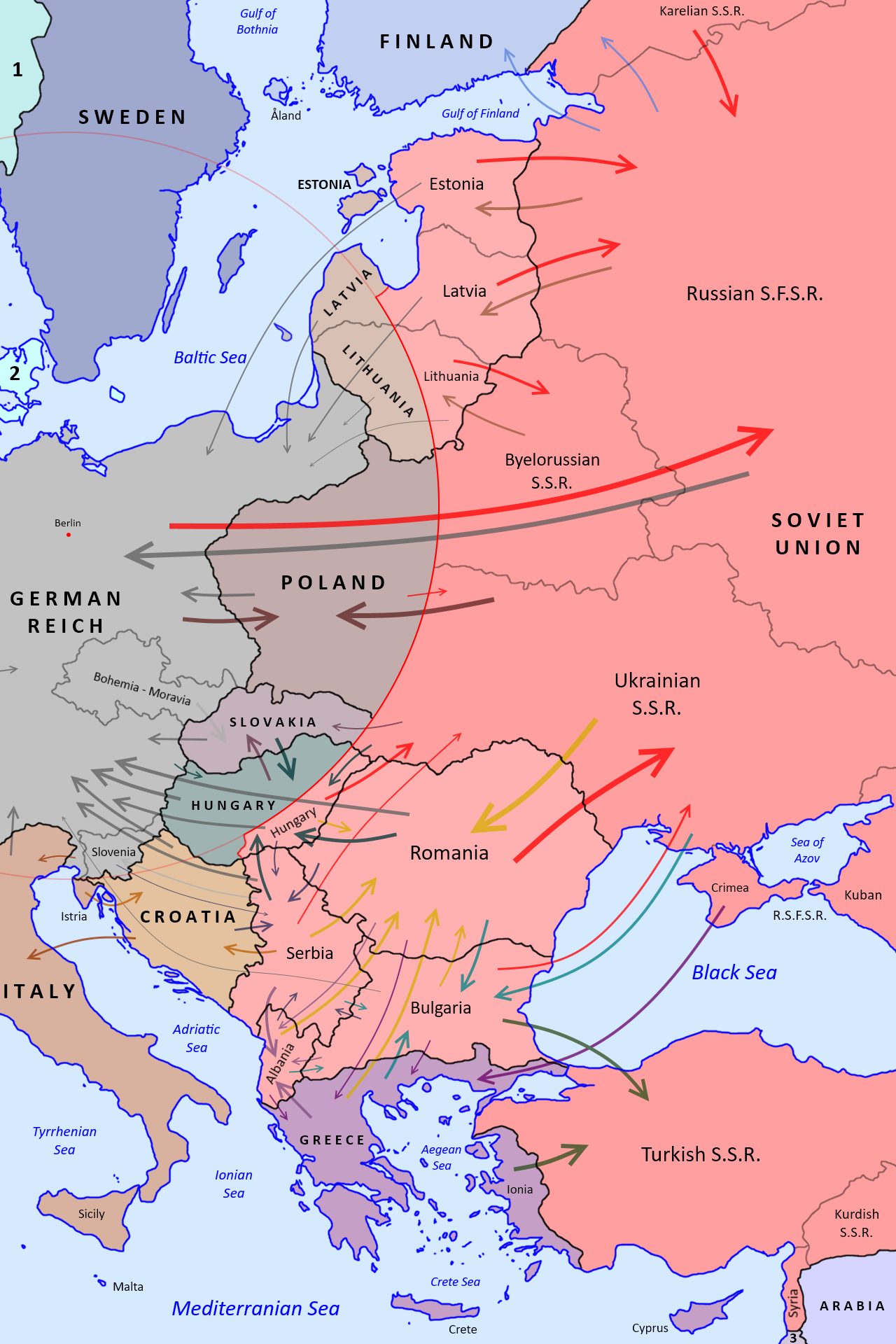







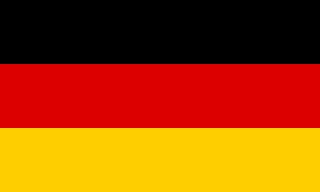 . . . . .
. . . . . 

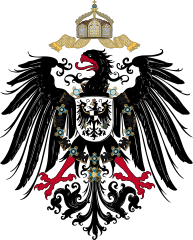

 . . . . .
. . . . . 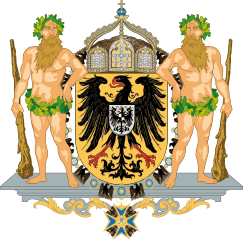 . . . . .
. . . . . 
 . . . . .
. . . . .  . . . . .
. . . . . 
 . . . . .
. . . . .  . . . . .
. . . . . 
 . . . . .
. . . . .  . . . . .
. . . . . 
 . . . . .
. . . . .  . . . . .
. . . . . 
 . . . . .
. . . . .  . . . . .
. . . . . 
 . . . . .
. . . . .  . . . . .
. . . . . 
 . . . . .
. . . . .  . . . . .
. . . . . 
 . . . . .
. . . . .  . . . . .
. . . . . 
 . . . . .
. . . . .  . . . . .
. . . . . 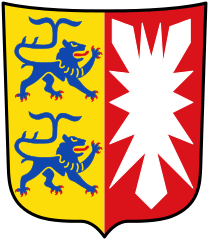
 . . . . .
. . . . .  . . . . .
. . . . . 
 . . . . .
. . . . .  . . . . .
. . . . . 
 . . . . .
. . . . .  . . . . .
. . . . . 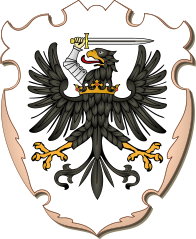
 . . . . .
. . . . .  . . . . .
. . . . . 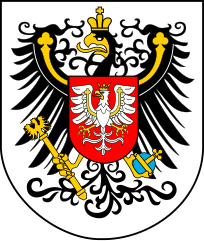
 . . . . .
. . . . .  . . . . .
. . . . . 
 . . . . .
. . . . .  . . . . .
. . . . . 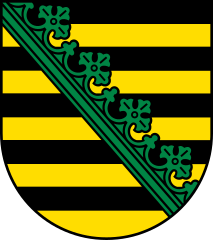
 . . . . .
. . . . .  . . . . .
. . . . . 
 . . . . .
. . . . .  . . . . .
. . . . . 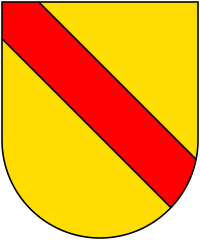
 . . . . .
. . . . .  . . . . .
. . . . . 
 . . . . .
. . . . .  . . . . .
. . . . . 
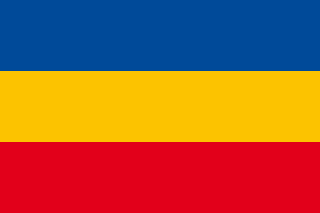 . . . . .
. . . . .  . . . . .
. . . . . 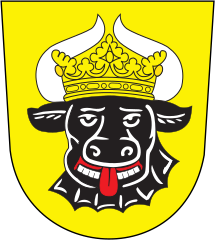
 . . . . .
. . . . .  . . . . .
. . . . . 
 . . . . .
. . . . .  . . . . .
. . . . . 
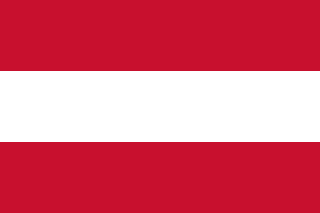 . . . . .
. . . . .  . . . . .
. . . . . 
 . . . . .
. . . . .  . . . . .
. . . . . 
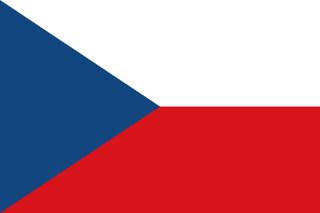 . . . . .
. . . . .  . . . . .
. . . . . 
 . . . . .
. . . . .  . . . . .
. . . . . 
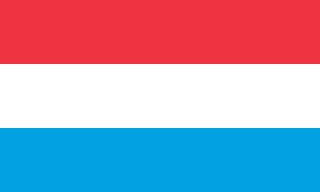 . . . . .
. . . . . 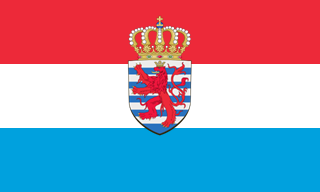 . . . . .
. . . . . 
 . . . . .
. . . . .  . . . . .
. . . . . 
 . . . . .
. . . . .  . . . . .
. . . . . 
 . . . . .
. . . . . 
 . . . . .
. . . . . 
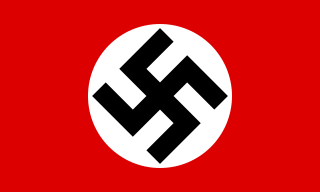 . . . . .
. . . . . 
 . . . . .
. . . . . 
 . . . . .
. . . . . 

 . . . . .
. . . . . 
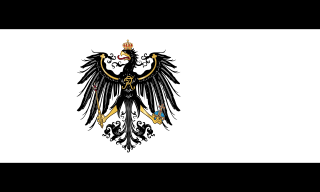 . . . . .
. . . . . 